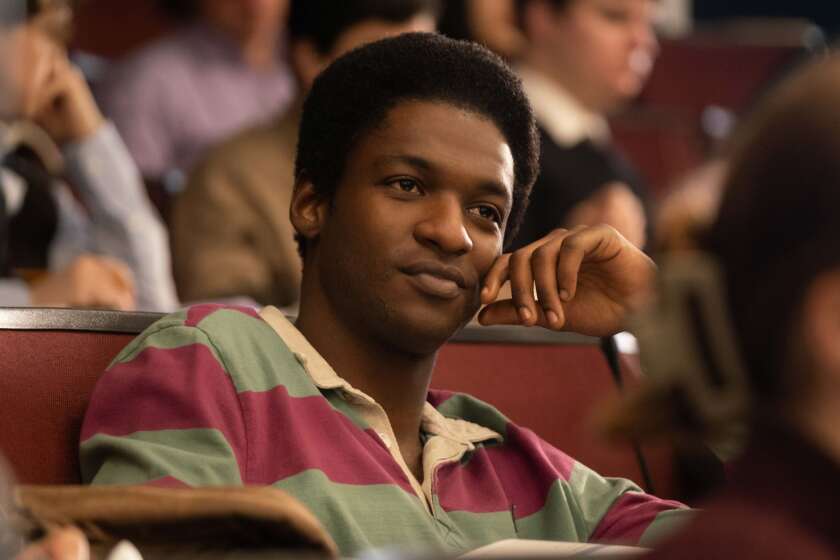It was ‘all or nothing’
Here was the challenge director Alfonso Cuaron posed to his longtime cinematographer, Emmanuel Lubezki, when the two were filming “Children of Men”: Cuaron wanted to cover 12 script pages in one continuous take from inside a compact Fiat Multipla stuffed with five passengers trying to flee terrorist assailants on motorcycles.
It’s sort of a high-stakes game between the two. For each movie they make, they draw up the film’s rules of engagement, vowing to carry out what Lubezki describes as “intricate cinematic codas,” no matter how difficult.
“When I work with Cuaron, we make radical decisions about how we’re going to shoot,” Lubezki says. “It’s all or nothing, according to strict rules we create for ourselves.”
The director and cinematographer -- former film school classmates in Mexico City -- have held fast to these self-made doctrines for the past two decades.
“While we’re shooting, we’re always suffering,” Lubezki says. “At some point, I say to myself, ‘Oh, my God. What am I doing? This is a soap opera.’ ”
And so the soap opera of the Fiat unfolded on a road under cloudy skies, which meant the exteriors were five times brighter than the inside of the darkened car, making it difficult to photograph both without over-or- underexposing the shots. Not to mention the difficulty of fitting a camera and operator into the car to film each of the five actors in close up, Lubezki adds.
“I said, ‘Cuaron, this is practically impossible to do,’ ” Lubezki recalls. “ ‘You really have to let me think about this shot.’ ”
They had just a month before they had to shoot the scene, which “sounds like a long time, but it’s not for this type of complicated setup,” he says. “It’s like trying to build a building in a week with a number of unknowns.”
First, Lubezki and his camera department attempted a standard car rig.
“One of the rules for us is always try to keep it simple and if you can’t ..., go from there,” he says.
When the easy-does-it approach didn’t work, he and Cuaron tried to figure a way to re-create the whole sequence digitally.
But even the CG-savvy director of “Harry Potter and the Prisoner of Azkaban” and the cinematographer behind “Lemony Snicket’s A Series of Unfortunate Events” were unable to figure out a way to simply shoot the actors against green screen and then later insert photographic backgrounds without racking up an enormous visual-effects bill and adding days to the postproduction schedule.
Besides, a laborious digital approach would have broken their own rules: Try to shoot on location. Try not to light it. Shoot with the lead actors and with real backgrounds.
With just three weeks before filming of the four-day sequence was to start, Lubezki called Doggicam Systems’ Gary Thieltges, a Los Angeles-based camera-rig guru.
They removed the car roof and installed a rail system that allowed the camera to operate on a two-axis grid, controlled by a joystick. Lubezki, his focus puller and a dolly grip sat above the actors in an enclosed translucent loft. The car seats were modified so the actors could use levers to tilt and lower themselves out of the camera’s path as it zoomed in and out.
The result is a remarkably intense chase scene in which the claustrophobic fear of the passengers in the car is palpable.
Still in the exhaustion of the moment, the cinematographer imagined breaking the rules or dropping the shot: “If I was directing ‘Children of Men,’ it may have been, ‘You know something? This scene is too hard and it’s getting too expensive. Let’s just cut it,’ ” Lubezki says. “That’s why you need Cuaron. You need that energy.”
More to Read
Only good movies
Get the Indie Focus newsletter, Mark Olsen's weekly guide to the world of cinema.
You may occasionally receive promotional content from the Los Angeles Times.








